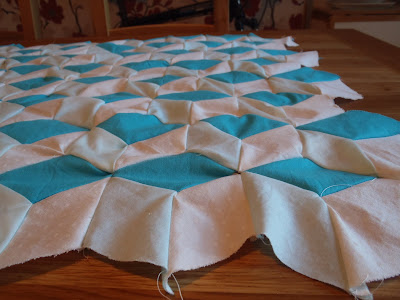See, I don't have children. Nor do I live in a desirable enough area to happily own a pet without the worry of it being stolen/ kicked at/ urinated against (welcome to Newquay). My job is quite demanding, so how should I spend my down-time when the sun is neither out, nor brightening up?
The age-old art of the seamstress. It started out of necessity - sewing blinds and curtains for about a thousand staring windows in my boyfriends former-bachelor-pad-turned-love-or-lets-face-it-in-those-days-lust-nest.
Curtains turned to cushions - that's still acceptable, right? Cushions turned into felt hanging mobiles and perhaps the odd garmet for godchildren - still socially acceptable when you're helping to clothe naked children, yes?
And then my brother, goddamn him, went and announced that I'm soon to be an aunt. Well something took over. A friend of mine happened to show me a 1970s patchwork book she'd found and I couldn't be stopped.

My sewing machine used to get so dusty that said brother had to whittle me a sewing box for my 30th birthday last year. Now the poor thing's on its last legs. Every time I open the box I can hear it groan. 'Come on you loser', it's telling me. 'Get a bloody life'.
But I can't. This is the life of a 30 something career woman. I know I've probably stepped straight out of the 1800s, but even so, back then it was a social acceptance. Nowadays you feel you should keep such a habit out of the public eye - knitting from behind bus stops, embroidering confined to your bedroom with the (home-made) curtains firmly shut.
Perhaps I should just give in to being 'Desperate Housewife' Bree, duster in hand, smoothing down my half-apron. And before you ask, yeah, I've made one of those too....













